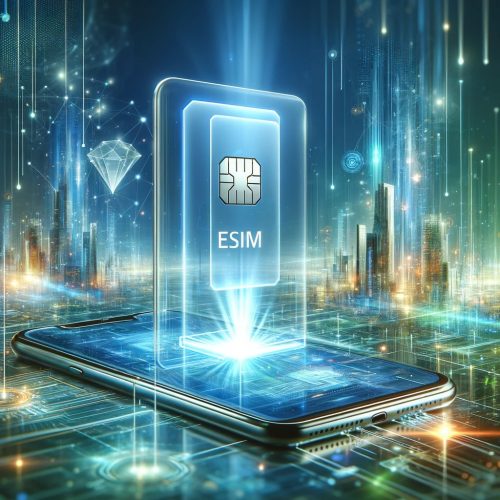By Fernando Raymond, Digital Entrepreneur and Nomad
Traveling extensively for business has its challenges, especially when it comes to staying connected.

Traditional SIM cards have long been the go-to solution, but they come with their own set of hassles: finding a local provider, dealing with compatibility issues, and the inconvenience of physical SIM swaps. That was my reality until I discovered the game-changing technology of eSIMs.
What is an eSIM?


Integrated into your device, it’s a small chip that’s reprogrammable and can hold multiple profiles. It’s not just about ditching the physical SIM; it’s a leap towards more flexible and seamless connectivity.
How Does an eSIM Work?
The beauty of an eSIM lies in its simplicity and functionality. Unlike traditional SIM cards, you don’t physically swap anything. Instead, you download a cellular plan directly to your device.


- Device Compatibility: First, ensure your device supports eSIM technology. Many modern smartphones, including the latest iPhone models, are eSIM compatible.
- Choosing a Plan: Select a cellular plan from a provider that offers eSIM services. This can often be done online, which is a boon for travelers.
- Activation: Activate the plan by scanning a QR code or entering details provided by the carrier. This process digitally ‘installs’ the SIM profile on your device.
- Switching Between Profiles: If you’re a jet-setter like me, you can store multiple eSIM profiles and switch between them as needed, depending on your location. This eliminates the need to physically change SIM cards when crossing borders.
My Experience with eSIM in India and Sri Lanka
My journey with eSIMs began in India and continued in Sri Lanka. The convenience was immediate and profound. In India, I activated an eSIM plan right from my hotel room, bypassing the usual hassle of finding a local SIM provider. The process was quick, easy, and completely digital.
In Sri Lanka, the experience was equally smooth. I switched to a local eSIM profile without any physical SIM changes, maintaining my connection seamlessly. Uploading videos, browsing the internet, and managing my digital business became more efficient than ever.
Why eSIMs are a Game-Changer for Digital Nomads?
For digital nomads and frequent travelers, eSIMs offer several advantages:
- Convenience: No more juggling multiple SIM cards or visiting local stores. Everything is manageable digitally.
- Space-Saving: As eSIMs are embedded, they save physical space in your device, allowing for sleeker phone designs.
- Flexibility: Easily switch between profiles, making it ideal for those who frequently travel between countries.
- Cost-Effective: Often, eSIM plans are more affordable, especially for short-term travel, as they cater to a global market.
The eSIM revolution represents a significant shift in the way we think about mobile connectivity. eSIM, or embedded SIM, technology eliminates the need for physical SIM cards and allows devices to connect to cellular networks digitally. This advancement offers a range of benefits and opportunities for consumers, businesses, and the telecommunications industry.
Consumer Benefits:
- Flexibility and Convenience: eSIMs enable users to switch carriers or plans without changing physical SIM cards, making it easier to manage multiple numbers or international plans.
- Device Design Freedom: Without the need for a SIM card slot, device manufacturers have more freedom to design slimmer, more innovative products.
- Enhanced Connectivity: eSIMs allow for more devices to be connected, fostering the growth of the Internet of Things (IoT).
Business and Industry Impact:
- Telecom Operators: eSIM technology challenges traditional business models, pushing carriers to innovate and offer more flexible services.
- Device Manufacturers: With eSIMs, manufacturers can streamline production and potentially reduce costs.
- New Market Opportunities: eSIMs open up new possibilities in the IoT domain, with applications in smart homes, healthcare, and automotive industries.
Challenges and Considerations:
- Security and Privacy: As with any digital solution, eSIM technology must ensure robust security and privacy protections.
- Standardization and Regulation: Global standardization is crucial for the widespread adoption of eSIM technology.
- Consumer Awareness and Education: Consumers need to be educated about the benefits and usage of eSIMs to drive adoption.
The shift to eSIM technology is more than just a trend; it’s the future of connectivity. It aligns perfectly with the needs of digital entrepreneurs and nomads, offering freedom, flexibility, and fuss-free travel.








































